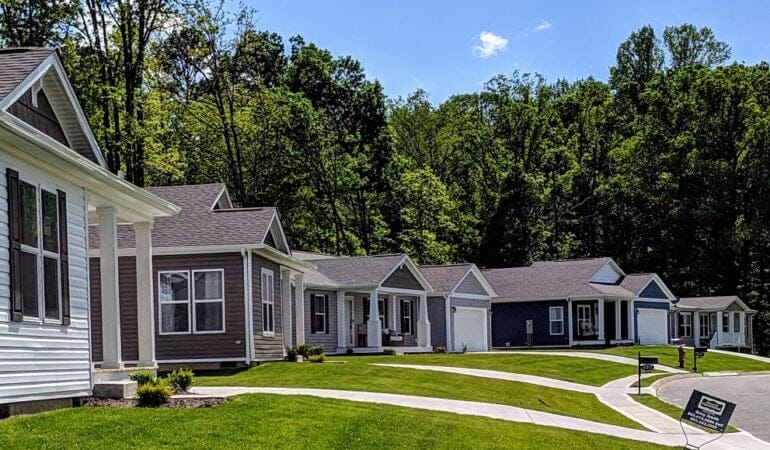
As Conforming Loan Limits Hit Record Highs, Manufactured Housing Provides an Affordable Alternative
Not that anyone needed more proof of how swiftly home prices have risen in the past two years, but here it is: Beginning in January, mortgages of up to $726,200 will be considered “conforming loans” in most parts of the United States, the Federal Housing Finance Agency announced in late November.
Known as the conforming loan limit, the cap is adjusted annually based on average home prices and represents the maximum single-unit home loan that government-sponsored entities Fannie Mae and Freddie Mac can purchase. The new limit is $79,000 more than the 2022 threshold of $647,200, which was an increase of nearly $100,000 over the 2021 cap of $548,250.
“This in many ways represents what’s considered a modest home,” says Jim Gray, senior fellow at the Lincoln Institute. “Fannie and Freddie can’t purchase ‘jumbo’ loans,” he adds, referring to mortgages that exceed the conforming loan limit.
Conforming loans can be even higher in more expensive metros, and some will crest $1 million for the first time ever next year. Mortgages of up to $1,089,300 will count as conforming loans in the cities and suburbs of Los Angeles, San Francisco, New York, and Washington, among other high-priced areas.
The updated loan limits reflect the reality of rapidly rising home prices, as tracked by the FHFA’s Housing Price Index, which jumped 18.1 percent in 2021 and another 12.2 percent this year.
In this new normal of housing finance—where a $725,000 mortgage on a $900,000 home can be considered a conventional loan in every U.S. county—one highly affordable housing option deserves more attention, according to a network convened by the Lincoln Institute.
“It is possible, in many U.S. markets, to acquire a very high-quality, energy-efficient, manufactured home, including land, for less than half of the conforming loan limit,” Gray says, citing research by the nonprofit organization Next Step. The Lincoln Institute and Next Step are both members of the Innovation in Manufactured Homes (I’m HOME) Network.
A new type of manufactured home that is virtually indistinguishable from a site-built home currently costs approximately $300,000 on average, including land, according to Next Step. Called a “CrossMod,” it’s manufactured in a factory, but incorporates design elements like pitched rooflines and is installed on a permanent foundation, allowing it to qualify for conventional financing.
Land prices vary dramatically, of course; the median cost of a building lot was $55,000 nationwide in 2021, according to the National Association of Homebuilders, but a typical single-family lot cost $143,000 on the West Coast and a record-high $200,000 in New England.
But even as the price of land increases for all housing types, in all regions, the cost efficiencies of manufactured housing can help create affordable homeownership opportunities.
Manufactured homes cost an average of $72 per square foot to build, according to the Manufactured Housing Institute, compared to $143 per square foot for a site-built home. That means a land-and-home mortgage on a newly built 1,800-square-foot manufactured house can easily come in at $100,000 less than one on a site-built house, regardless of land costs.
But such an arrangement isn’t as commonplace or accessible as members of the I’m HOME Network would hope. Fannie Mae and Freddie Mac purchase some 62 percent of residential mortgages in the United States, but they back less than 25 percent of manufactured home mortgages—and those loans comprised less than 1 percent of Fannie and Freddie’s $2.63 trillion in overall mortgage financing in 2021, according to data from Recursion and the Urban Institute.
“Since Fannie and Freddie have a mission of trying to reach more Americans of modest incomes,” Gray says, “this further underscores why it’s so important that Fannie and Freddie make greater efforts to serve the manufactured housing market.”
Jon Gorey is a Lincoln Institute staff writer.
Image credit: Next Step.
